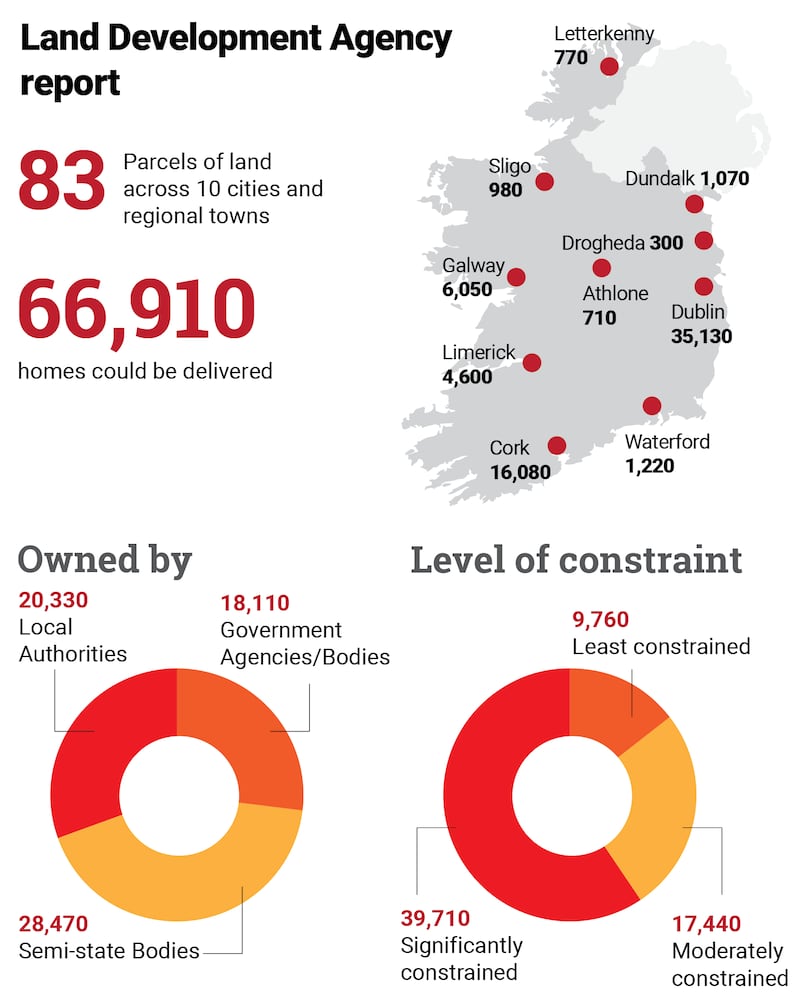The Government has potential to build at least 60,000 “affordable” homes on public lands but still faces big hurdles unlocking State property for housing, a report compiled for the Cabinet has found.
In a long-awaited review of property assets controlled by State bodies the Land Development Agency (LDA) has found there is scope to build tens of thousands of dwellings on sites in Dublin, Cork, Limerick, Waterford and Galway.
Construction on that scale would make significant inroads into the housing crisis after Taoiseach Leo Varadkar recently said 250,000 new homes were needed to fill Ireland’s housing deficit, far more than foreseen in the Coalition’s 2021 Housing for All master plan.
However, officials accept the LDA findings raise the prospect of a clash with State agencies if they refuse to vacate land so it can be used for housing. In the face of mounting political pressure on the Government to boost housing supply, the LDA report is likely to prompt debate on what more can be done to make public land available for building.
READ MORE
The Dublin sites identified as being suitable for “affordable” housing include Horseracing Ireland land at Leopardstown, land at the Central Bank mint in Sandyford and CIÉ's bus depot at Conyngham Road near the city centre.
Lands at Galway Harbour, ESB property at Sarsfield Road in Cork and the Ervia gasworks site at Dock Road in Limerick are also on the list of premium sites that could be developed in the next five to 10 years.
Such properties have the advantage of having access to infrastructure and transport links in the main cities, the LDA report said. Sites for housing in Sligo, Letterkenny, Dundalk, Drogheda and Athlone have also been identified.
The agency has stressed that before there is any building on these sites considerable preparatory work will be required over the course of the next decade. This is not least because State bodies holding the properties may have to shift their operations from the sites or scale them back to make way for housing.

The LDA was established in 2018 to amass and develop State property for housing. Under a 2021 law it was also required to identify where lands already in public ownership could be exploited for housing.
The agency’s report, due to be reviewed by the Cabinet on Tuesday, is the first overarching assessment of the public land that could in the future be used for housing. Despite identifying a large number of potential sites, the LDA has stressed that considerable preparatory work will be required before any building begins.
The report also warned of big challenges to be overcome before other lands can be released for housing. It noted, for example, that large holdings of Army land at Cathal Brugha barracks in Rathmines were heavily “constrained” from a development perspective and were, therefore, not in line for the first or even second wave of building on State property.
“The LDA believes all the sites are underutilised and could be better used. Much of the land is brownfield, all under the control of public bodies,” said a person familiar with the report. “Any future plan by the government to push ahead with developing these sites would have to involve widespread consultation and the LDA acknowledges that.”
The LDA expects to provide 6,000 new homes by 2026 under the Project Tosaigh initiative through which it backs private developers. The agency has planning permission for a further 1,900 new homes on State land. Planning approval for another 1,865 homes is being awaited.














